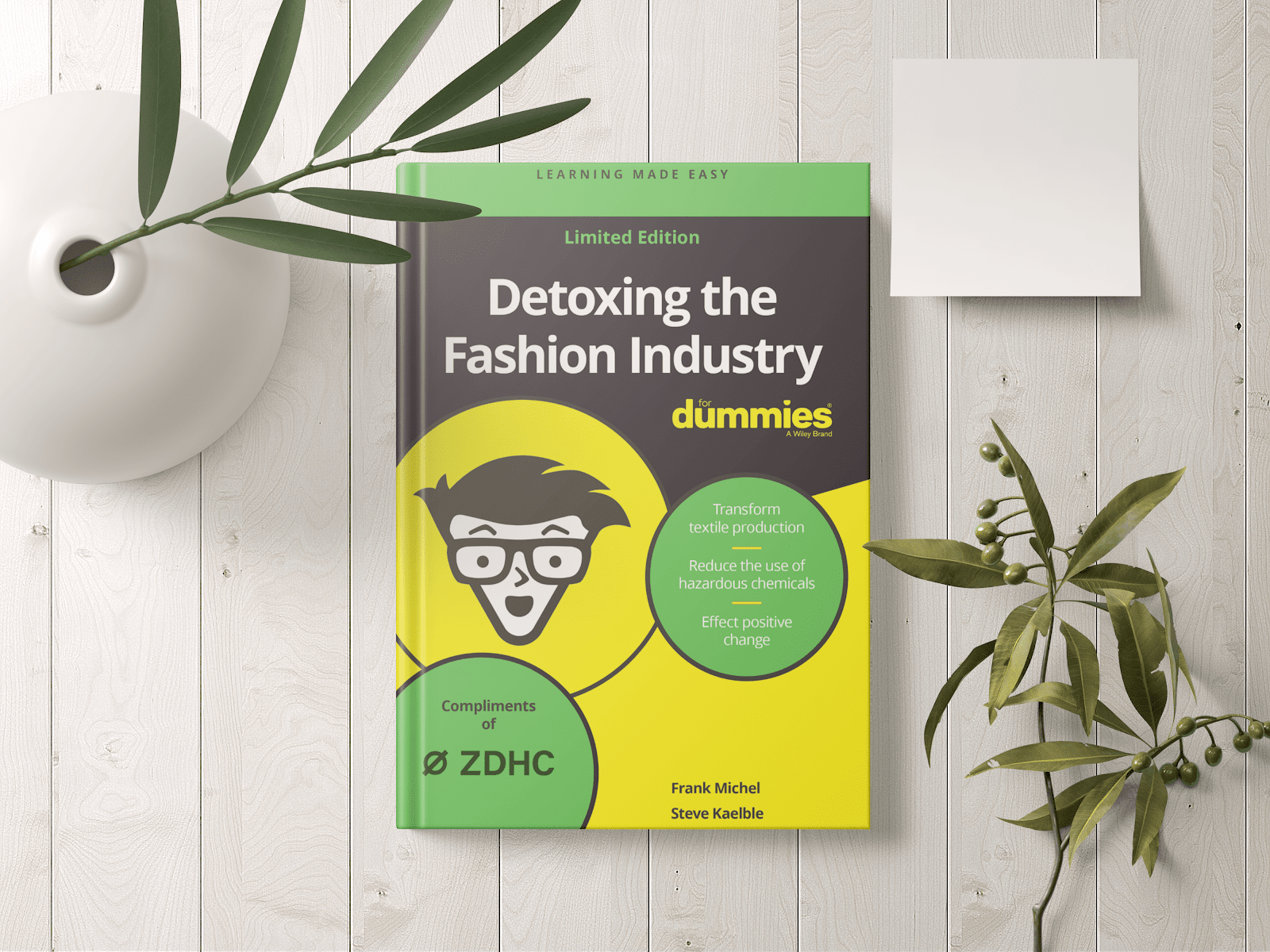Photo Alex Kondratiev
What’s in my clothes? If you’re asking that question, you probably expect the answer to be about fabric content. Polyester? Cotton? Wool maybe, or silk. But what about chemicals? You won’t find these listed on your typical garment label.
Last Series, Clare interviewed Greenpeace activist Kirsten Brodde, who led the Detox My Fashion Campaign. Launched in 2011, the campaign forced fashion to wake up to the toxic trail of textile production. So what’s changed since then?
Chemistry in fashion is still not a mainstream topic, and most people have no idea about chemical use in clothing production. But the fashion industry has made headway.
The Greenpeace campaign succeeded in making fashion take action. Initially 6 brands got behind the formation of the Zero Discharge of Hazardous Chemicals (ZDHC) programme, with the aim of removing hazardous chemicals from apparel and footwear supply chains by 2020. It’s called Roadmap to Zero.
Discover how it works, learn about the wins and find out what’s left to be done.
DETOXING THE FASHION INDUSTRY FOR DUMMIES by Frank Michel and Steve Kaelble is a free ebook that tracks the history of chemistry in fashion and summarises the issue and tools to regulate it today. DOWNLOAD IT here.
CAST
In order of appearance:
KIRSTEN BRODDE is a Greenpeace activist. She led the Greenpeace Detox My Fashion Campaign. She appeared on Episode 95 - listen here.
FRANK MICHEL is executive director of the Zero Discharge of Hazardous Chemicals Foundation.
ROGER WILLIAMS is an an award winning producer, director and cinematographer. He directed the 2016 documentary River Blue.
NOTES
ZDHC The Zero Discharge of Hazardous Chemicals Foundation is based in Amsterdam and works globally to keep hazardous chemicals out of water, air, and away from workers. They provide things like chemical management training, and wastewater guidelines. But they also want consumers to better understand the use of chemicals in the fashion industry.
RSL stands for Restricted Substances List. It focuses on ensuring chemicals are not present above certain levels in finished products. Only looking at RSL compliance means that hazardous chemicals could potentially have been used somewhere in the manufacturing process. Protocols like the REACH regulation kept many harmful chemicals out of the Europe Union, but does not address impacts further down the supply chain.
An MRSL is Manufacturing Restricted Substances List. In the ZDHC context, these substances are banned from intentional use in facilities processing textile materials, leather, rubber, foam, adhesives and trim parts in textiles, apparel, and footwear.
The ZDHC MRSL includes chemicals used as solvents, cleaners, adhesives, paints, inks, detergents, dyes, colourants, auxiliaries, coatings and finishing agents used during raw material production, wet-processing, maintenance, wastewater treatment, sanitation and pest control.
CHEMICALS USE In fashion, chemicals are used to colour clothing, but also make it functional. Chemicals make a piece of clothing shiny, water-resistant, colourful, and durable, and throughout each step of the fashion supply chain, chemicals are involved.
CHEMISTRY does not have an inherent morality or value. As Frank says “Chemicals are not good or bad - we are made of chemicals. The air we breathe is chemicals, the water we drink is chemicals! However, as we all know some chemicals are toxic and some must be used in moderation. (Just drink too much wine and you’ll realise too much of a good thing can make you sick - or worse!)”
Watch the River Blue trailer here:
MUSIC is by Montaigne, who sang this special acoustic version of “Because I love You” from her album Glorious Heights, just for us.
Can you help us grow? Tell your friends about Wardrobe Crisis, or leave a review in your favourite podcast app.
Clare & the Wardrobe Crisis team x




